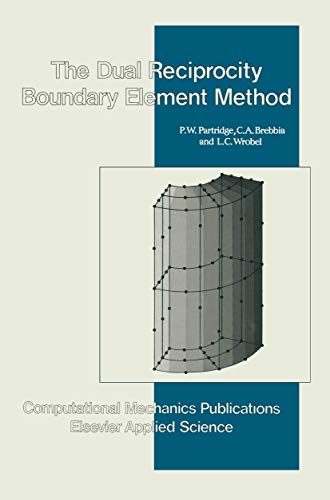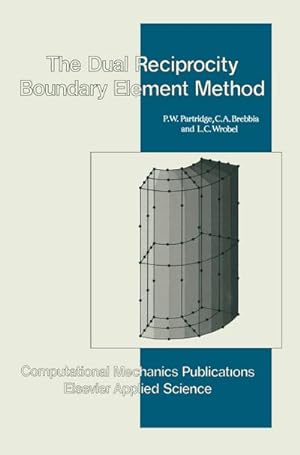partridge brebbia wrobel (18 resultados)
ComentariosFiltros de búsqueda
Tipo de artículo
- Todos los tipos de productos
- Libros (18)
- Revistas y publicaciones (No hay ningún otro resultado que coincida con este filtro.)
- Cómics (No hay ningún otro resultado que coincida con este filtro.)
- Partituras (No hay ningún otro resultado que coincida con este filtro.)
- Arte, grabados y pósters (No hay ningún otro resultado que coincida con este filtro.)
- Fotografías (No hay ningún otro resultado que coincida con este filtro.)
- Mapas (No hay ningún otro resultado que coincida con este filtro.)
- Manuscritos y coleccionismo de papel (No hay ningún otro resultado que coincida con este filtro.)
Condición Más información
- Nuevo (14)
- Como nuevo, Excelente o Muy bueno (3)
- Bueno o Aceptable (No hay ningún otro resultado que coincida con este filtro.)
- Regular o Pobre (No hay ningún otro resultado que coincida con este filtro.)
- Tal como se indica (1)
Encuadernación
- Todas
- Tapa dura (18)
- Tapa blanda (No hay ningún otro resultado que coincida con este filtro.)
Más atributos
- Primera edición (No hay ningún otro resultado que coincida con este filtro.)
- Firmado (No hay ningún otro resultado que coincida con este filtro.)
- Sobrecubierta (No hay ningún otro resultado que coincida con este filtro.)
- Con imágenes (9)
- No impresión bajo demanda (13)
Idioma (1)
Precio
- Cualquier precio
- Menos de EUR 20 (No hay ningún otro resultado que coincida con este filtro.)
- EUR 20 a EUR 45
- Más de EUR 45
Gastos de envío gratis
Ubicación del vendedor
Valoración de los vendedores
-
Dual Reciprocity Boundary Element Method
Librería: Libreria sottomarina - Studio Bibliografico, ROMA, RM, Italia
EUR 42,00
Convertir monedaEUR 19,00 gastos de envío desde Italia a EspañaCantidad disponible: 1 disponibles
Añadir al carritorilegato. Condición: Ottimo (Fine). Book.
-
EUR 96,75
Convertir monedaEUR 5,14 gastos de envío desde Reino Unido a EspañaCantidad disponible: Más de 20 disponibles
Añadir al carritoCondición: New. In.
-
Dual Reciprocity Boundary Element Method
Publicado por Springer Netherlands, Springer Netherlands, 1991
ISBN 10: 1851667008 ISBN 13: 9781851667000
Idioma: Inglés
Librería: AHA-BUCH GmbH, Einbeck, Alemania
EUR 95,65
Convertir monedaEUR 11,99 gastos de envío desde Alemania a EspañaCantidad disponible: 1 disponibles
Añadir al carritoBuch. Condición: Neu. Druck auf Anfrage Neuware - Printed after ordering - The boundary element method (BEM) is now a well-established numerical technique which provides an efficient alternative to the prevailing finite difference and finite element methods for the solution of a wide range of engineering problems. The main advantage of the BEM is its unique ability to provide a complete problem solution in terms of boundary values only, with substantial savings in computer time and data preparation effort. An initial restriction of the BEM was that the fundamental solution to the original partial differential equation was required in order to obtain an equivalent boundary in tegral equation. Another was that non-homogeneous terms accounting for effects such as distributed loads were included in the formulation by means of domain integrals, thus making the technique lose the attraction of its 'boundary-only' character. Many different approaches have been developed to overcome these problems. It is our opinion that the most successful so far is the dual reciprocity method (DRM), which is the subject matter of this book. The basic idea behind this approach is to employ a fundamental solution corresponding to a simpler equation and to treat the remaining terms, as well as other non-homogeneous terms in the original equation, through a procedure which involves a series expansion using global approximating functions and the application of reciprocity principles.
-
Dual Reciprocity Boundary Element Method
Librería: GreatBookPrices, Columbia, MD, Estados Unidos de America
EUR 95,87
Convertir monedaEUR 17,24 gastos de envío desde Estados Unidos de America a EspañaCantidad disponible: Más de 20 disponibles
Añadir al carritoCondición: New.
-
EUR 96,74
Convertir monedaEUR 17,18 gastos de envío desde Reino Unido a EspañaCantidad disponible: Más de 20 disponibles
Añadir al carritoCondición: New.
-
Dual Reciprocity Boundary Element Method
Librería: California Books, Miami, FL, Estados Unidos de America
EUR 116,40
Convertir monedaEUR 6,90 gastos de envío desde Estados Unidos de America a EspañaCantidad disponible: Más de 20 disponibles
Añadir al carritoCondición: New.
-
Dual Reciprocity Boundary Element Method
Librería: GreatBookPrices, Columbia, MD, Estados Unidos de America
EUR 106,22
Convertir monedaEUR 17,24 gastos de envío desde Estados Unidos de America a EspañaCantidad disponible: Más de 20 disponibles
Añadir al carritoCondición: As New. Unread book in perfect condition.
-
EUR 107,52
Convertir monedaEUR 17,18 gastos de envío desde Reino Unido a EspañaCantidad disponible: Más de 20 disponibles
Añadir al carritoCondición: As New. Unread book in perfect condition.
-
Dual Reciprocity Boundary Element Method
Publicado por Springer Netherlands, Springer Netherlands Dez 1991, 1991
ISBN 10: 1851667008 ISBN 13: 9781851667000
Idioma: Inglés
Librería: buchversandmimpf2000, Emtmannsberg, BAYE, Alemania
EUR 90,94
Convertir monedaEUR 35,00 gastos de envío desde Alemania a EspañaCantidad disponible: 2 disponibles
Añadir al carritoBuch. Condición: Neu. Neuware -The boundary element method (BEM) is now a well-established numerical technique which provides an efficient alternative to the prevailing finite difference and finite element methods for the solution of a wide range of engineering problems. The main advantage of the BEM is its unique ability to provide a complete problem solution in terms of boundary values only, with substantial savings in computer time and data preparation effort. An initial restriction of the BEM was that the fundamental solution to the original partial differential equation was required in order to obtain an equivalent boundary in tegral equation. Another was that non-homogeneous terms accounting for effects such as distributed loads were included in the formulation by means of domain integrals, thus making the technique lose the attraction of its 'boundary-only' character. Many different approaches have been developed to overcome these problems. It is our opinion that the most successful so far is the dual reciprocity method (DRM), which is the subject matter of this book. The basic idea behind this approach is to employ a fundamental solution corresponding to a simpler equation and to treat the remaining terms, as well as other non-homogeneous terms in the original equation, through a procedure which involves a series expansion using global approximating functions and the application of reciprocity principles. 304 pp. Englisch.
-
Dual Reciprocity Boundary Element Method (International Series on Computational Engineering)
Librería: Books Puddle, New York, NY, Estados Unidos de America
EUR 128,82
Convertir monedaEUR 9,92 gastos de envío desde Estados Unidos de America a EspañaCantidad disponible: 4 disponibles
Añadir al carritoCondición: New. 284.
-
EUR 141,82
Convertir monedaEUR 11,45 gastos de envío desde Reino Unido a EspañaCantidad disponible: 2 disponibles
Añadir al carritoHardcover. Condición: Brand New. 300 pages. 9.25x6.10x0.83 inches. In Stock.
-
Dual Reciprocity Boundary Element Method
Librería: Lucky's Textbooks, Dallas, TX, Estados Unidos de America
EUR 94,68
Convertir monedaEUR 64,70 gastos de envío desde Estados Unidos de America a EspañaCantidad disponible: Más de 20 disponibles
Añadir al carritoCondición: New.
-
The Dual Reciprocity Boundary Element Method (International Series on Computational Engineering (Unnumbered).)
Librería: Buchpark, Trebbin, Alemania
EUR 257,49
Convertir monedaGratis gastos de envío desde Alemania a EspañaCantidad disponible: 1 disponibles
Añadir al carritoCondición: Sehr gut. Zustand: Sehr gut | Seiten: 276 | Sprache: Englisch | Produktart: Bücher.
-
Dual Reciprocity Boundary Element Method
Librería: moluna, Greven, Alemania
EUR 79,10
Convertir monedaEUR 19,49 gastos de envío desde Alemania a EspañaCantidad disponible: Más de 20 disponibles
Añadir al carritoCondición: New. Dieser Artikel ist ein Print on Demand Artikel und wird nach Ihrer Bestellung fuer Sie gedruckt. The boundary element method (BEM) is now a well-established numerical technique which provides an efficient alternative to the prevailing finite difference and finite element methods for the solution of a wide range of engineering problems. The main advanta.
-
Dual Reciprocity Boundary Element Method
Publicado por Springer Netherlands Dez 1991, 1991
ISBN 10: 1851667008 ISBN 13: 9781851667000
Idioma: Inglés
Librería: BuchWeltWeit Ludwig Meier e.K., Bergisch Gladbach, Alemania
EUR 90,94
Convertir monedaEUR 11,00 gastos de envío desde Alemania a EspañaCantidad disponible: 2 disponibles
Añadir al carritoBuch. Condición: Neu. This item is printed on demand - it takes 3-4 days longer - Neuware -The boundary element method (BEM) is now a well-established numerical technique which provides an efficient alternative to the prevailing finite difference and finite element methods for the solution of a wide range of engineering problems. The main advantage of the BEM is its unique ability to provide a complete problem solution in terms of boundary values only, with substantial savings in computer time and data preparation effort. An initial restriction of the BEM was that the fundamental solution to the original partial differential equation was required in order to obtain an equivalent boundary in tegral equation. Another was that non-homogeneous terms accounting for effects such as distributed loads were included in the formulation by means of domain integrals, thus making the technique lose the attraction of its 'boundary-only' character. Many different approaches have been developed to overcome these problems. It is our opinion that the most successful so far is the dual reciprocity method (DRM), which is the subject matter of this book. The basic idea behind this approach is to employ a fundamental solution corresponding to a simpler equation and to treat the remaining terms, as well as other non-homogeneous terms in the original equation, through a procedure which involves a series expansion using global approximating functions and the application of reciprocity principles. 304 pp. Englisch.
-
Dual Reciprocity Boundary Element Method
Publicado por Kluwer Academic Publishers Group, 1991
ISBN 10: 1851667008 ISBN 13: 9781851667000
Idioma: Inglés
Librería: THE SAINT BOOKSTORE, Southport, Reino Unido
EUR 110,07
Convertir monedaEUR 8,72 gastos de envío desde Reino Unido a EspañaCantidad disponible: Más de 20 disponibles
Añadir al carritoHardback. Condición: New. This item is printed on demand. New copy - Usually dispatched within 5-9 working days 650.
-
Dual Reciprocity Boundary Element Method (International Series on Computational Engineering)
Librería: Majestic Books, Hounslow, Reino Unido
EUR 131,46
Convertir monedaEUR 10,14 gastos de envío desde Reino Unido a EspañaCantidad disponible: 4 disponibles
Añadir al carritoCondición: New. Print on Demand 284.
-
Dual Reciprocity Boundary Element Method (International Series on Computational Engineering)
Librería: Biblios, Frankfurt am main, HESSE, Alemania
EUR 136,09
Convertir monedaEUR 14,50 gastos de envío desde Alemania a EspañaCantidad disponible: 4 disponibles
Añadir al carritoCondición: New. PRINT ON DEMAND 284.












